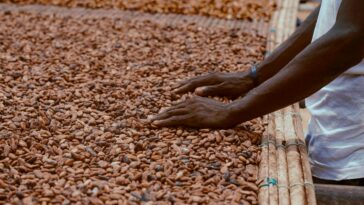The International Market for Nilotica Shea Butter: A Growing Opportunity
Nilotica shea butter, a rare and premium variety derived from the Vitellaria nilotica tree, is gaining international recognition for its superior quality, unique composition, and numerous skincare benefits. Sourced primarily from East and Central Africa, particularly Uganda, South Sudan, and parts of Kenya, Nilotica shea butter is softer, more emollient, and richer in essential fatty acids and vitamins than its West African counterpart.
Why is Nilotica Shea Butter in High Demand?
In recent years, the global market for natural and organic skincare products has expanded significantly, fueling the demand for Nilotica shea butter. As more consumers seek plant-based, sustainably sourced, and ethically produced skincare solutions, Nilotica shea butter has emerged as a preferred alternative due to its deep hydration, anti-aging properties, and ability to soothe sensitive skin.
Moreover, luxury skincare and cosmetics brands are incorporating Nilotica into their product lines because of its soft texture and high oleic acid content. Its suitability for moisturizers, lotions, lip balms, and anti-aging creams makes it a highly sought-after ingredient. Major beauty markets, including North America, Europe, and Asia, are witnessing a steady rise in interest in this premium shea butter.
Who are the Key Players in the Nilotica Shea Butter Market?
The Nilotica shea butter industry is expanding as African cooperatives, ethical sourcing companies, and international skincare brands collaborate to bring this rare ingredient to global consumers. Several niche skincare brands and major cosmetic companies are marketing Nilotica shea butter products by emphasizing their hydration, elasticity-boosting, and skin-nourishing properties.
Additionally, ecommerce platforms and online marketplaces have played a significant role in increasing the global accessibility of pure Nilotica shea butter. Platforms like Amazon, Etsy, and organic skincare retailers are helping reach a wider audience, further driving market growth.
Sustainability and Ethical Sourcing of Nilotica Shea Butter
One of the key factors influencing the international market for Nilotica shea butter is the emphasis on sustainable and ethical sourcing. As global consumers become more conscious of fair trade, environmental responsibility, and ethical skincare, brands sourcing Nilotica must adhere to high ethical production standards.
Supporting women-led cooperatives in East Africa, ensuring fair wages for local harvesters, and adopting environmentally sustainable harvesting methods are crucial for the long-term success of the Nilotica industry. Ethical sourcing not only benefits local communities but also enhances brand trust and loyalty among conscious consumers.
Challenges and Future Prospects for Nilotica Shea Butter
Despite its rising popularity, Nilotica shea butter faces some challenges in the international market:
- Limited production capacity and high demand can lead to supply constraints.
- Export logistics from East and Central Africa can impact pricing and availability.
- Consumer education is necessary to differentiate Nilotica from West African shea butter.
Looking ahead, the future of the Nilotica shea butter market appears promising. As more skincare brands recognize its unique benefits and invest in sustainable sourcing, the market will continue to expand. Governments and non-governmental organizations (NGOs) are also supporting initiatives that enhance the production and export of organic Nilotica shea butter, further strengthening its global presence.
Conclusion
The global market for Nilotica shea butter is experiencing rapid growth, driven by increasing demand for natural, organic, and ethically sourced skincare products. With its deep moisturizing properties, soft texture, and sustainability advantages, Nilotica is carving out a niche in the premium beauty and wellness industry.
As awareness and availability grow, this luxurious African treasure is set to become a staple ingredient in high-end skincare products worldwide. Whether you’re a skincare brand, a beauty entrepreneur, or a conscious consumer, investing in Nilotica shea butter presents a valuable opportunity in the booming organic beauty market.


